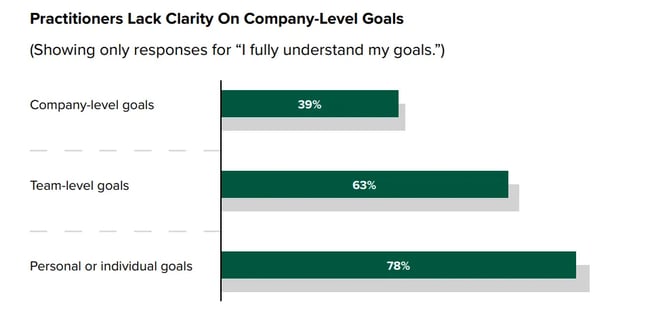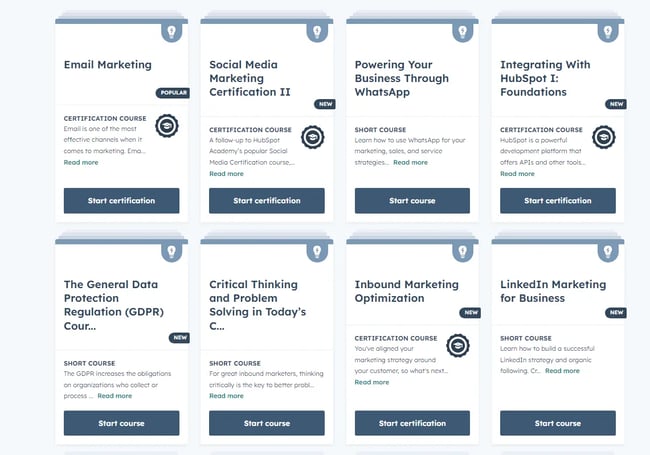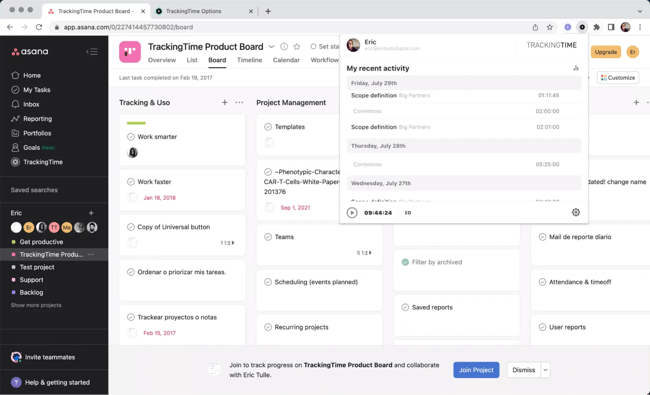Our view at Stack - Simplify growth with an all-in-one platform. Powerful marketing, sales, and support automation. Integrated CMS. Scalable software. Crafted for customer experience.
Creating a productive workplace for yourself is tough enough, but doing it for the entire team? That’s a whole different ball game.
As a marketing team leader for many years, I learned firsthand the importance — and the challenges — of building a productive workplace.
But wherever I worked, my goal was the same: to inspire my team and help them break through barriers to achieve their best. I led the way, guiding each member from beginner to expert. I turned juniors into specialists and even team leads.

Being a team leader taught me that creating a productive workplace isn‘t about rules and plans — it’s about people. How do they feel? What motivates them? Do they feel heard?
In this piece, I’ll share my personal insights blended with tips from ten amazing industry experts to help you build a highly productive workplace.
Table of Contents
- What is Workplace Productivity?
- How to Increase Productivity in the Workplace
- How to Build Productive Teams
- Tips for Managing a Productive Workplace
What is Workplace Productivity?
Workplace productivity is the contribution each team makes to the company’s success. You can measure it in different ways — like how much work gets done in an hour, how much money each employee brings in, or how often projects are finished on time.
But there’s more to productivity than just, well, producing. The “how” we produce also matters, and it’s a big part of equipping ourselves and our workplaces to become more efficient.
We need to treat productivity more holistically, or as Dan Shipper said in his TED talk, “We think productivity is about software, notebooks and to-do list frameworks, calendars, schedules, and inboxes. And it is all of those things, but it’s also about our brains and our bodies.”
So what should a productive workplace look like? Here are four things it should prioritize.
1. Healthy Work-Life Balance
When your team feels like they’re constantly in work mode, with no room to breathe or pursue other interests, productivity suffers.
Working more doesn’t mean more work gets done — especially not quality work. People need a good balance between work and free time. They need to recharge and feel supported in managing their personal lives alongside their work.
And that’s not just my opinion. A 2022 study on the interactive influence of work-life benefits backs this up. It found that perks like flexible work hours and childcare support lead to happier teams, a better work atmosphere, and everyone being more productive.
2. Good Communication and Collaboration
Being a team leader is about more than being an authority figure. Sure, you have more responsibilities — approvals, guiding the team — but you’re not the sole idea generator or decision-maker.
According to a 2023 research study, most employees said they felt left out of decisions. Needless to say, this shouldn’t be the case, since communication and collaboration are essential to true productivity.
During my time as the head of outbound content marketing at Serpstat, I led my team by keeping communication open, and I genuinely welcomed every strategic or creative suggestion. I found it valuable when someone offered a different perspective, even if it contradicted my own.
After all, being a leader didn’t mean I had all the right answers — it meant I needed to empower my team by showing I valued collaborative ideas, conflict resolution, and smooth teamwork.
3. Clear Goals and Objectives
A 2022 Forrester study found that only 39% of participants fully understood their company’s goals. On the other hand, 78% of them completely understood their personal/individual goals.
That poses the question: Is it really necessary for team members to know company-level goals?
No.
Is it beneficial?
Yes.
If they understand how their individual goals fit into the company’s goals, they’ll feel more productive and motivated to hit the target.

Image Source
When all employees understand a company’s core motives, goals, and mission, they show amazing results. As the bestseller book “Start with WHY” suggests, sharing your company’s mission with employees, and helping them feel invested in it, must be in every successful company’s DNA.
Mission alignment also helps with motivation. Mateusz Calik, CEO at Delante, shared an interesting story on how he recognized the power of goal setting:
“I’ve always hated and felt so tired and undermined in jobs where there was no clear end to a task … What helped me was a system of work my second-ever boss exposed me to. Set deadlines, set projects, and set purposes. It is the true antidote to procrastination.”
How to Increase Productivity in the Workplace
Take breaks to keep at peak performance.
Breaks are not wasting time. Breaks are for recharging batteries and then getting back to do more and better.
A recent study showed that breaks and self-care are crucial for better productivity and overall health. Workers need at least an hour of rest for every eight hours they work. It’s best if the breaks actually break up the working hours, but of course, it depends on the job — just don’t stick to your monitor during a break. Getting away from your screen and your workstation is the goal here.
Pro tip: I use the Pomodoro technique for quality work — 25 minutes of effective work and then 5 minutes of rest. And those 5 minutes mean real rest: a short walk, stretching, drinking water, and breathing fresh air.
While it seems like it would be easier to take more frequent breaks while working remotely, that’s not always the case. Deb Mukherjee, head of marketing at Numeral, emphasized that “we overwork ourselves during remote.” The truth is, while at home, many of us fail to take necessary breaks. Mukherjee suggests that in this work environment, breaks are more crucial than ever.
Mukherjee also believes in seizing quick, spontaneous breaks during the day to share non-work-related tidbits with colleagues, giving our brains a short breather.
“We have a #fun voice channel where folks come on throughout the day and talk about random stuff like their dog’s recent antics,” Mukherjee says.
Get rid of distractions to get more done in less time.
When there’s too much noise or constant interruptions, no one can concentrate.
Set up quiet zones where you can focus without distractions. You can also try using noise-canceling headphones to block out any background chatter. When at the office, I use AirPods and search for “music for concentration” on YouTube Music.
But the best solution here? Get rid of the phone and notifications. Unless it‘s for work calls or messages, tuck it away somewhere so it doesn’t tempt you to scroll through social media endlessly.
Stop multitasking to decrease work-related stress.
Multitasking = getting less done.
Multitasking is jumping from one task to another before it’s done. For example, you might work on a letter, then switch to LinkedIn, then attend a meeting, and then return to the letter. Instead of finishing tasks quickly, multitasking means each task gets less of your attention. And trust me, you’ll goof over something.
A recent study found that multitasking negatively affects work and home life. Despite many believing it’s essential, it actually leads to increased stress, reduced concentration, and poorer results.
While this kind of task-switching makes us feel more productive, it actually slows us down in the long run. As HubSpot Co-Founder Darmesh Shah famously said, “Don’t kid yourself that you can multitask — you can’t. Task switching is cognitively expensive.”
Set SMART goals to keep tasks organized.
Preceden research reveals that visualizing your goals can boost productivity by 18%.
So, instead of just tackling tasks randomly, set SMART goals to avoid burnout and be more productive. SMART is a great framework for breaking down a goal into smaller, more manageable steps to avoid feeling overwhelmed.
SMART goals are:
- Specific. Make sure the goals you set are specific. The more detailed, the better.
- Measurable. Make sure your goals are measurable so that you can see progress and adjust accordingly.
- Attainable. Goals should be attainable; if they’re not, rewrite them.
- Relevant. Goals should align with you or a company’s values and long-term vision in order to make a real impact on change and performance.
- Time-Bound. Set a deadline.
To put this into practice, I like writing my goals in a notebook every Friday evening or Monday morning, so I know what goals I want to achieve next week. Then, I put them on my Monday board and make sure to track and mark my progress regularly.
How to Build Productive Teams
Provide ongoing training in different fields.
From day one, ensure that every team member receives proper onboarding training and ongoing education. These sessions are great for improving skills, communication, and teamwork.
For example, for your content team, offer regular workshops on content creation or SEO updates. Use free and paid resources. Navigate to a free HubSpot Academy for digital marketing and project management courses designed by experts in their fields.

Also, get your senior team members to lead workshops with juniors to significantly strengthen team bonds and share knowledge.
Pro tip: Training doesn’t always have to be work-related. Connor Butterworth, founder of Rug Slinger, shared that his company regularly organizes workshops for personal development. This approach resulted in continuous month-over-month growth.
Support your team in every possible way because their internal well-being directly affects their performance.
Encourage collaboration and lead by example.
Collaboration makes people feel like they’re part of a team. When colleagues work together, they build trust and friendship. This makes the workplace a healthy place to be, projects get finished faster, and the results are often better.
Marcus Clarke, founder of Searchant, states that the best way to foster collaboration is through sessions, meetings, and one-on-one chats.
Once he prioritized this, Clarke says, “I noticed my team felt more comfortable in sharing and expressing their minds and concerns. This led to increased problem-solving, creativity, and productivity in general.”
Also, if you’re a team leader or manager, try to be a role model. Show your team how collaboration works by actively participating and sharing ideas yourself.
As a team leader, I used to often say, “Hey Matt, how does this work? Can you help me with XYZ?” Sure, I could probably Google it, but I wanted to show the team it’s normal to ask for advice and help.
Make your meetings more productive.
Don’t hold meetings just for the sake of holding them — especially weekly planning and retrospective meetings.
Start by setting clear objectives and agendas beforehand. Encourage everyone to contribute their ideas and opinions.
However, leave five minutes for a casual conversation to check on your team’s mood and set a relaxed but professional atmosphere.
Watch this short TedX tutorial on bad versus good meetings.
Focus on results, not clock-watching.
When results are the main focus, everyone’s motivated to work smarter, not just harder. For that reason, I don’t like time-trackers for remote jobs.
I used to be a full-time employee for a company that made us use a tracker even when working at the office. As a result, employees felt stressed and as if they were not trusted to do their best work. Needless to say, this works against productivity.
Instead, as a manager, stick to what counts — your team’s performance and results.
Olivier Bretton, the founder of Niceboard, has great perspective on this.
“The most crucial thing that has helped me create a productive workplace for my team at Niceboard is a fully remote setup,” Bretton notes.
According to Bretton, remote work has helped create a more flexible and focused work environment for his team. “It also encourages productivity since employees are not evaluated on time spent ‘at work’ but rather on their actual performance outputs,” he says.
Pro tip: Present time-tracking to your team as a temporary means for troubleshooting, optimizing workflows, and amplifying productivity. Encourage your team to use this as a tool to understand workload versus capacity, find bottlenecks, and improve personal time management.
Tips for Managing a Productive Workplace
Avoid Micromanaging
Don’t micromanage your team.
A 2024 study from the Leadership & Organization Development Journal showed that micromanagement is one of the most common workplace issues, particularly in hybrid/remote work environments. It comes with many negative effects, like anxiety, demotivation, and reduced productivity. I’d also add that micromanaging discourages task ownership.
Of course, you can‘t give your team freedom without first training and guiding them. But once that’s happened, let them take the stage and shine. It’s not always going to be easy, but we need to accept mistakes and failures as a part of the growth process.
We can also take a cue from Alexandra Ilie, project marketing manager at Touchpoint. Ilie says she learned that giving her team freedom was just a start.
“When things started to go sideways, instead of diving back into micromanaging, we set clearer expectations, provided more resources, and really amped up the support. We made sure everyone knew what was expected and had what they needed to meet those expectations,” Ilie says.
Use Productivity and Automation Tools
Teamwork without tools like Trello, Asana, Monday.com, Zapier, Airtable, etc., would be chaotic. They help with managing tasks, sharing files, coordinating schedules, and collaborating in real time.
According to a recent HubSpot study, 75% of +1350 business professionals agree that automation tools help their organization collaborate more effectively.
Kellie Davis, director of content marketing at Impact.com, says, “We keep all project communication in Asana …That way, everyone can see what’s happening, avoiding messages getting lost in Slack or email.” When communication and collaboration are effective, “everyone is happier and feels more control over their work.”

Image Source
Pro tip: When offering productivity apps, be sure that each team member receives training on how to use the apps effectively. I find it helpful to create a Loom video where I explain everything step by step. This way, team members can watch at their own pace and leave comments at specific points if they have questions or need clarification.
Ask for Feedback
It’s not just the manager who should give feedback. Your team should also give input on projects, assess team dynamics, and flag any behavior that doesn’t align with your company culture.
Team members can also give feedback on the manager’s leadership style. For example, I often checked in with my team to see how they felt about my leadership and if there were any changes they wanted me to make.
We also rolled out anonymous surveys to highlight both strengths and areas for improvement. This acted like a “health check” for each team, and served a great purpose.
Celebrate Successes
A 2023 Great Place to Work study found that 37% of employees would do better work when they receive personal recognition. So, when your employees do something great, give them a shout-out.
Cheer for both big and small wins. For instance, in your Slack group, give a shout out to a team member who nails a project, crafts a great pitch, or shares an awesome social media post. And when the win deserves more than just praise, think about starting a bonus program or giving out gift cards. You can also reward your team with an extra day off. Trust me — this will be a big hit.
In the words of Vartika Kashyap, chief marketing officer at ProofHub, “You don’t have to wait for major milestones to acknowledge individual or team achievements.”
At ProofHub, Kashyap holds a small team lunch to celebrate successful campaigns. “This shows my genuine appreciation towards them. Plus, it boosts their morale and encourages them to continue their dedicated effort,” Kashyap says.
Positive Environment = Productivity Blossom
We have rolled through a lot of methods, tools, and advice for creating a productive work environment. But if I had to sum it all up in a single piece of wisdom, it would be this: Keep it simple.
People thrive in a work environment that’s straightforward and easy to work in. No micromanaging, no overwhelming tasks. Create a positive, helpful, and supportive vibe. Communicate, share ideas, and encourage your team to speak up about what’s bothering them. When everyone feels like part of the crew, teamwork becomes dreamwork.

![]()
If Hubspot is of interest and you'd like more information, please do make contact or take a look in more detail here.
Credit: Original article published here.
